 16Likes 16Likes
 |
|

27 Jul 2011
|
|
Registered Users
Veteran HUBBer
|
|
Join Date: Mar 2010
Location: Bucharest, Romania
Posts: 117
|
|
|
Into the World - 2Up Romanian adventure through Africa and beyond
We are a Romanian couple of architects: Ionut, riding the bike and Ana, bickering in the back. Fuelled by Sir David Attenborough's documentaries, an Achilles tendon rupture and past travels to Sri Lanka, Hong Kong and South-East Asia, here we are, daring ourselves to make a dream come true. We've been thinking about this trip for two years and preparing for it for one and, after another freak motor accident that postponed our departure by over 9 months, we finally loaded our Yamaha Tenere motorbike in a van and left Bucharest on the 11th of June. A car broken down and a two-day "cruise" by ferry from Livorno to Tanger later, we begin our trans-Africa biking adventure with a warm up month in Morocco.

With over 6 years of riding under my belt, mostly on street bikes, this time I have chosen the Tenere for our 2-up RTW trip, knowing that there is no perfect bike, only the will do do something like this. The soul of my first totaled Tenere is alive in the current motorbike, after I did an engine swap to a newer, but with higher mileage 2010 machine.

The first Tenere had just arrived.

GPS mount and weather proof case.

Kev Mod - from xt660.com

First Tenere outside our garage. Custom Leo Cans just mounted.


Supersporx. Scottoiler injector. In the meantime the new bike has a touring Scottoiler and a custom dual-injector.

Custom sidecase rack.

Upgrading the suspension to Hyperpro Combo kit. Thanks to HYPERPRO



Alu short brake and clutch lever.

Unifilter foam filter.

The CRASH.


The second Tenere just arrived. The soul of the crashed Tenere in the back, days from being transplanted to the new one.

The bike has the following mods/ upgrades:
- front + rear steel braided brake hose
- high Givi windshield
- GPS mount + direct battery charger with backup system
- custom-made radiator protection
- G-IT aluminum engine shield + crashbar combo (from AdventureSpec)
- MK3 pivot pegs
- Unifilter foam air filter
- Kev mod (from xt660.com)
- Renthal Dakar fatbar with KTM plastic handguards, alu short brake and clutch lever and rallyride foam grips
- Hein Greike tankbag
- custom made dual Leo Vince SBK exhausts (with custom dB killer)
- 14 tooth JT front sprocket
- touring Scottoiler
- custom rack for aluTech 41l cases
- Hepko & Becker Gobi topcase
- 150W inverter for gizmo charging
- Hyperpro suspension upgrade (front progressive springs with 15W oil and rear progressive spring)
Also we carry loads of tools and parts, along with a change of knobbies for later. Fitness preparation aside, we are geared up with these essentials and geeky things:
- The North Face Roadrunner 3 seasons lightweight tent
- The North Face Twin Peaks -7 degrees resistant 2 person sleeping bag + MSR silk liner + Mammoth self-inflating mats
- MSR stove for cooking, stainless steel pot, knife, 2x petzl + extra torchlight, binoculars, machete, compass, MSR pactowels, compression + dry sacks, water filter + purifying tablets
- foto: 5DMKII + 20D bodies, 24 f/1.4, 70-200 f/2.8, Sigma 10-20 F/4-5.6; Polaroid Pogo printer; 13" Macbook; GPS
- first aid kit (sterile bandage, scissors, sterile needles + anesthetic, bethadine, Baneocin, Clartec antihistaminic, Malarone, diarrhea pills, calcium, rehydratable powder, antibacterial gel, Siddhaleppa ayurvedic balm for pains/flu/insect bites, thermometer, 50% DDET mosquito repellant, 50+ sunscreen, eye drops, antibiotics, aspirin, Ibuprofen, talc, medical tape); moto wear: Arai Tour X3 + Shoei XR1100 helmets, Rev'It Offtrack jacket + Sand pants and Turbine ladies combo with Gaerne boots; other stuff: 3 tshirts each, swimming suit, moto socks + gloves, cotton Thai pants, slippers, 1 pair shorts each, 3 pairs knickers each, scarf, 1 bed sheet (very useful for picnics and as sun/wind shield), sunglasses, spare of clear visor for rider, lots of GPS maps, PDF books and guides. In Mauritania we started carrying a 5l jerrycan with gas and a 5l raffia-insulated plastic can with water (hint from locals). Usually we bushcamp, or stay in campings when in cities, from time to time stopping for a refreshing night or two in a auberge. We eat where the locals do, in markets and street food stalls and restaurants, but we love to cook when fresh produce is available. 7000km into the trip, we had little maintenance and servicing to do: a change of oil, change of chain (freak thing, a fairly new one, it got stiffer and stiffer with o-rings falling off), replacing the chain safetypin (fish-pin fell possibly due to offroading).

Bushcamping in Rabat.

We miss our kitchen.

Changing the oil.


Our mule heavily loaded.




|

27 Jul 2011
|
|
Registered Users
Veteran HUBBer
|
|
Join Date: Mar 2010
Location: Bucharest, Romania
Posts: 117
|
|
|
Morocco - A Warm Up
After loading our Tenere in a van that broke down 300 km from Livorno (where we were to catch the ferry to Morocco), we began our trans-Africa riding adventure with a bang. It's crazy how the 2008 VW Transporter timing belt gave up at merely 50K!





EU citizens are allowed a 90 days stay in Morocco without a visa. We entered via the newly launched Tanger Med port, where the border formalities are a breeze; its a one-stop-shop, you get your passport stamped, then checked by the gendarmerie, then the duane officer issues for free a Declaration d'admission temporaire de moyens de transport (temporary import permit).

For the customs you can apply online, using this form. The International Motor Insurance Card (green card) from your country of origin may also cover Morocco, you want to check this with your insurer (that is the case for Romania). Otherwise you can purchase insurance at the border. The Moroccan infrastructure is quite developed, with over 1145km of autoroute and good tarred roads even in countryside. Morocco is an offroad paradise, with adrenaline-pumping pistes zig-zagging the ever changing landscape. The gas (essence) is about 1 Euro/liter and widely available at gas stations or at hole-in-the-walls in small villages. There are ATM machines everywhere, but obviously the food stalls are cash only.
Morocco boasts a diverse landscape, ranging from wild Atlantic coasts to 4K High Atlas peaks, from sterile desert to lush oases, from Sahara dunes to mudbrick villages. We rode through the north (Tanger, Larache) which is feeling the crunch of the real estate bubble, with ghost towns and suburbs that nobody can afford built in the middle of nowhere. We stayed in and around Rabat for a week, waiting for the Mali and Mauritania visas, camping on beaches and getting to know the local way of life.






While Rabat has an european feel, the shanty towns that line the coast and the lively fresh food markets are intensely moroccan, so is charming Mahommedia. East from Rabat we used Meknes as our base camp for a few days, visiting the Imperial cities (Fez, Meknes), the sacred town of Moulay Idriss and the ancient ruins of Volubilis.




The Medina, (the medieval centre of Fez) has not changed for centuries: a maze of narrow alleys housing hundreds of merchants and craftsmen, stalls with spices, dried fruits and nuts, fish, handmade copper items, carpets and musical instruments. A seat of Arab learning, a Holy City and a place of pilgrimage (when the route to Mecca was obstructed), Fez was a place of considerable importance until recently, being the depot for the caravan trade from the south and east of the African continent. A must see in Fez is the Leather Souq with the oldest leather tannery in the world, Chouwara.




Even if Fez has a more intricate architecture in the beautifully preserved UNESCO World Heritage Medina, we found that Meknes has a more authentic feel, with few to no tourists and touts and a Medina where people seem to actually live and work (not just for show). Moulay Idriss is a little gem, a fairytale town on top of a mountain among olive tree hills, where life has a slower pace.
|

27 Jul 2011
|
|
Registered Users
Veteran HUBBer
|
|
Join Date: Mar 2010
Location: Bucharest, Romania
Posts: 117
|
|
|
Morocco - A Warm Up
Later we rode through Casablanca, heading inland toward the High Atlas. After sleeping in a millet field and after a villager gave us fresh cow milk in the morning, we climbed to the 100m high Ouzoud falls (in full swing at this time of year). You can pass the touts and faux-guides and ride your bike close to the pools where you can take a cold plunge or enjoy the free spectacle of nature; just take the right gravel road before the bridge for 5-600m.

In the afternoon we stopped again in Azilal for a tagine, then continued on a breathtaking route among peaks ranging from 2K to 4K. The landscape kept changing every hour, from lifeless valleys, to cactus infested walls, from reddish soil and rocky forests to fragrant cedars and green canyons punctuated by magenta wild flowers. When the road appeared to end, we suddenly found ourselves at 2750m altitude, from where 50km of tarmac interrupted by gravel brought in by spring floods led us to Imilchil.


We slept a charmed night at the Gite d'etape run by a Berber family. Aziz has built the beautiful house himself and is a licensed guide. He also has a shop in the village, selling carpets hadmade by his wife, Fatma.



After eating some freshly baked bread in the morning, we left behind the Bhutan-like atmosphere of beautifully camouflaged Imilchil behind, heading to Gorges Dades via Agoudal. Enter the most thrilling piste so far: after Agoudal the tarmac turns to gravel, then just traces in the dust. For 5 km we rode through a riverbed that had erased the piste during the recent floods. Offroading with a heavily loaded bike proved difficult and we took a few tumbles, managing to cover only 100km in more than 4 hours. Apart from the riverbed crossings, the piste is a fun ride, climbing to 2700m then going down in hairpins and thrilling turns, with alternating gravel, rocky patches, sand and dirt. The piste ends with a 30cm deep river crossing, from where the road is all tarmac, interrupted by landslides that are easy to manage. As if the whole day ride wasn't enough, we crossed the canyon of Dades back to another famous set of spaghetti-like road.





The public demonstrations cheering the king's peace oriented decision to promulgate a new constitution (giving more executive power to the elected government) arrived from Meknes where we last seen them in Boulmaine de Dades. We bushcamped outside the town, then left at sunrise to see the place where Sahara starts. You can see the mighty sand dunes in two places in Morocco: the golden ones of M'Hamid or the psychedelic pink Erg Chebbi in Merzouga, which is where we arrived in a blazing hot weather. A weird afternoon rain in the Sahara and a pool plunge later, we woke up to see the sun rising behind the glistening foot-trace swallowing mirage that is Erg Chebbi, a dune 160m high, bordered by the village of Hassi Labied.



The beauty of the desert is magical, and we left the second day still reveling in it. As a technical problem that has been aggravating for a while become urgent, we rushed the 400km through desertificated Draa Valley from Merzouga to Ouarzazate, where after a few days and with the help of Peter at BikersHome, we managed to change our defective chain.

Marrakech was like a punch in the face: crazy, hot, bursting with energy. It's instant love or hate, and we left our bike in the parking behind the Koutoubia mosque, then dove into the UNESCO World Heritage show that is Djemma el-Fna, with its storytellers, musicians, artisans and food stalls selling Michelin star worthy plates of tangia, sheep brain and seafood. The next day visit to Ali Ben Youssef medersa was followed by a protein load in Mechoui Alley, then a cool walk in the Jardin Majorelle.





At 5pm when we exit town, the roadside thermometer read 53 degrees Celsius, but 200 km further, in Essaouira, the wind capital of Africa, we felt chilly at 22. We didn't stay long to enjoy the white and blue spanish influenced colonial architecture of the medina, as our GPS got stollen in the fish market, only to be retrieved later against a 30 Euro ransom. That's why we ate quickly our delicious sardines, fresh fish and squid grilled at the public grillades de poisson with possibly the best bread in Morocco, then camped some 200km later, near Agadir.

|

27 Jul 2011
|
|
Registered Users
Veteran HUBBer
|
|
Join Date: Mar 2010
Location: Bucharest, Romania
Posts: 117
|
|
|
Morocco - A Warm Up
South of this package tourism oriented town, we rode a 3 day marathon through Western Sahara, ending up in Dakhla. Along the almost featureless landscape we bushcamped on a nice beach near Sidi Ifni and on a golden dune near Tarfaya.



We couldn't get to close to the soul of this country rich in natural resources (phosphate, fish abundant waters and oil) but with a difficult history, where the traditionally nomadic Saharawi herders are bribed with tout-compris homes to leave their identity behind (or are forced to live in refugee camps called ironically villages de peche), and where towns resemble M.A.S.H. movie sets, with their population of military personnel and UN workers.


After a month in Morocco where we rode over 6000km, the motorbike is in great shape and we experienced no technical issues, except for the chain problem. We took a few low-speed falls due to deep sandy patches and rocky pistes, the battery was drained two times while charging our laptop with the engine off and we had to send home a few spares and personal stuff in order to lose some 6,5 kg off the bike (which do make a sizable difference). So our first advice (not that is a huge novelty) is pack light, cause every gram counts.
People in Morocco are friendly, sometimes aggressively trying to sell you something or guide you, are not easy to trust, which is a shame, because up in the mountains you will meet genuinely sweet villagers and generous men. Moroccans nurture close family ties and friendships, and we witnessed how they warmly greet each other for minutes. The caffe culture is a big deal here, with solo men filling up terraces from morning to dawn, at a chat over coffee with friends. Women are harder to meet, but they are highly educated and almost all speak fluent French. Some Arab and Berber will come a long way here; in Merzouga area English is largely spoken and understood. We bought a Meditel modem for Internet, but discovered that IAM has a better 3G coverage, so we suggest you get that one instead.
Food is a reason to be here in itself. Produce is mostly organic and very regional: in Fez you have the famous fassi cousine with treats like b'sara (a soup made of fava beans served with a fragrant garlic olive oil), pigeon pastilla (a pastry spiced with cinnamon) and very spicy and hot sausage made of mutton and offal; in Meknes you can eat the freshest figs and delicious flat bread with thin crust and cumin spiced crumble; pure eucalyptus, almond or cactus honey is produced high in the Atlas; in Erfoud you will eat the best dates with the extraordinary sweet and creamy Medjool reigning supreme; Marrakech is home to sheep meat and offal delicacies like tangia (mutton or beef cooked slowly with cumin, ras-el-hanout, preserved lemons and olives in a dough-sealed clay pot), sheep brains and tongue and mechoui (whole sheep baked with spices in a vertical clay oven); the freshest fish is in Essaouira and other coastal cities - here you can follow our example, and buy your fish from the fihermen, then have it cooked for 5Dh/plate at the public grill, next to the market; in the Banana Village just before Agadir you can taste the local varieties of banana and suculent cactus fruits. All over the country you can find tasty veggies, mutton and beef kafta, gorgeous watermelons and melons, dried fruits and nuts, along with top quality spices like saffron, paprika, cumin and ras-el-hanout. The breakfast is usually bread with the best local olive oil or served with honey sweetened leben (local yoghurt), or couscous with cold sourmilk from streetside vendors. Bread is sold freshly baked along moroccan pancakes, which in Fez have a sweet spongy texture. At lunch people usually eat a tagine (a typical stew of meat or fish, slowly cooked on charcoal in a signature clay pot). Dinner is protein based: kafta or harira (bean soup with aromatic herbs, which in Agadir is served with a local twist - with dates, a boiled egg and a piece of hard caramel). Other signature Morocco treats available countrywide are freshly squeezed orange juice and green/black tea perfumed with fresh mint (called whisky marocain). Tap water is safe to drink and wild camping is possible in most unmarked places, even if locals may try to discourage you from doing so.






Also, it will be difficult to leave the country without buying some good quality shit.
|

28 Jul 2011
|
|
Registered Users
HUBB regular
|
|
Join Date: May 2007
Location: Hampshire, UK
Posts: 22
|
|
|
Great photos and narrative.
Keep going!
|

15 Aug 2011
|
|
Registered Users
Veteran HUBBer
|
|
Join Date: Mar 2010
Location: Bucharest, Romania
Posts: 117
|
|
|
Bamako - Street Food Bonanza
Sometimes borders are just lines on maps, but Mauritania - Mali frontier divides two very distinct worlds. The malian Sahel is vivid green and teeming with wildlife and cattle at watering ponds and instead of the bobo-wrapped touaregs and moors we meet ebony skinned people in Made in China footballers' thirst. Border control is smooth and fast, but we have to deal with the customs in the first malian town, Nioro de Sahel, where, because it's weekend (bad timing in Africa) the price for Laissez passes is double (10000 CFA)

Later we save some money camping in the police station compound and of course using their backyard as toilet. Too bad our Morocco stash is already history.
Overnight a very windy rainstorm shakes us dearly, filling our tent with dust. It merely cools the sticky hot air a bit, and in the morning we do our best to content our muddy misery and hit the road to Bamako.



We are rewarded with e wonderful ride throough a fertile hilly landscape, dotted with scenic villages and lush gardens. A group of Fulani people passes us by: the women are topless and have intricate hair braids and jewelry and huge moonshined packs of tree branches are tied to the donkeys. We are happy we have arrived here in wet season!
Bamako is a sprawling metropolis, with scooters and cars entangled together in big traffic jams, with bridges thrown over the mighty Niger river which divides the capital in two. The shanty towns are on one side, immersed in a sleepy rural life, while on the other side of the water there are concrete and glass administrative buildings and offices and some expensive hotels (with good wifi connection). Here it rains almost daily and only some of the streets are tarred. Bamako is a welcomed pitstop: we rest, wash our pathetic scruffy riding gear, we go for a visa and ATM run and Skype our families. The Burkina visa breaks our bank: 80 euro/pers!, recently doubled cause of french propaganda.
Bamako's heart beats in its colorful markets: near Place de la Liberte & Cinema Vox, in Grande Marche, in the fetish market we find innumerable stalls selling anything from fruit and vegs to clothing and plasticware made in Nigeria. Men are generally sporting generic Chinese designs, but the elegant women of Bamako wear traditionally inspired dresses and elaborate hairpieces and metes. People are warm and friendly, except for the usual guides, touts and beggars, with tricks that we are too familiar with from Romania. The sad thing is that they believe that "les blanc donnent des cadeaux", so who's to blame for that?

A Malian lunchlady in a typical Bamako street restaurant: a wooden bench + many pots
Bamako is famous for live music; as we are nearing Ramadan, women are celebrating and dancing in the streets.

A Malian hipster: different continent, different vogue
Great street food is a no brainer in Bamako: rice with sauce, chicken in lemon and ginger sauce, fried fish, grilled goat or mutton (brochetes), yam stews, cow heart and liver sauteed in a spicy onion sauce, frufru (mini rice or millet pancakes), mango, local melon (meh, but excellent as a salad with lime, fresh chili and olive oil), corn on a cob. Many favorite snacks are black eyed peas based: doughnuts served simple or in a millet congee fro breakfast. Boulageries with fresh baguettes are widely available, so are breakfast stalls with eggs and instant coffee with milk or tea. In the evening the streets are filled with stalls with bubbling pots: fish or meat stews, rice, chickpeas, fried potato/yam/plantain or even couscous.

Rice with peanut & baobab sauce (rise arachide)

Rice with fish sauce and African eggplant

Favorite soft drinks: lime lemonade, hibiscus juice (red) & spicy ginger lemonade

Our usual breakfast: bread with soft cheese and savannah flowers wild honey (with a smoky, sunny flavor) and tea-tree tea

Africa is crazy about mobile phones

The intricate Malian hello takes minutes

Flowers in the inner yard of Mission Catolique where we bunked for a few nights
Soon we had to leave the buzzing Bamako behind to head south-east to Sikasso, the vegetable garden of Mali.
|

15 Aug 2011
|
|
Registered Users
Veteran HUBBer
|
|
Join Date: Mar 2010
Location: Bucharest, Romania
Posts: 117
|
|
|
Sikasso - Rural Mali

My mom is venerated in this malian village 

We stopped over for an African lunch

Beef with onion and fried beans with chili


A typical pirogue driven by less typical paddles

Dragrace - 2 donkeypower vs. lots of diesel horses
The first night in Sikasso we camp in the backyard of a local family. We quickly become the village attraction, every detail of our tent pitching and logistics being scrutinized, analyzed and discussed with load enthusiasm. Later at night we are invited to join the family (husband, wife, 3 boys and a toddler + uncle) for dinner: boiled yam with a dash of oil, eaten by hand from a big pot. We offer some almonds from Morocco and then enjoy the ritualic 3 glasses of African tea artfully brewed by the woman. Only Bambara is spoken so we cannot communicate easily, and under the star-covered sky the silence in this village where there is no electricity nor running water is broken by some music coming from an old radio.

In the morning we eat a typical breakfast: millet congee with bean doughnuts

We are the village freaks: we have fun with the kids eager to mount the bike and we teach them some Romanian childhood games

Sikasso is the center of the 3rd Malian region; here are grown for local consumption and export: mango, bananas, nuts, millet, rice, tomatoes, cucumber, onion, pineapple, avocado. The market is bountiful so we enjoy a fabulous fruit and tea picnic later, near the Burkina border.

The rear tyre is almost done and we have a nail in, so I m contemplating switching to the knubbies. Also rumors are that the roads to the north are not tarred so…We bushcamp in a cute little spot and rain falls the better part of the night and all morning, when I am happy that I haven't rushed into changing the tires, as the tarmac is excellent up to Koutiala and then to Djenne.

Breakfast served in bed, under the cover of rain: avocado and tomatoes salad

This baobab was home to a large bird colony


Morning dew in the field of our next day bush camping spot

And on our tent

Another memorable breakfast

Critters


|

15 Aug 2011
|
|
Registered Users
New on the HUBB
|
|
Join Date: Dec 2010
Location: Bedfordshire, UK
Posts: 10
|
|
|
great story and fabulous photos. good luck with the rest of your journey!
|

16 Aug 2011
|
|
Registered Users
Veteran HUBBer
|
|
Join Date: Mar 2010
Location: Bucharest, Romania
Posts: 117
|
|
Quote:
Originally Posted by Hippy

great story and fabulous photos. good luck with the rest of your journey!
|
Thanks a lot Hippy!!!
|

16 Aug 2011
|
|
Registered Users
Veteran HUBBer
|
|
Join Date: Mar 2010
Location: Bucharest, Romania
Posts: 117
|
|
|
Djenne - Mall of Africa
After the fertile landscape of the last 3 days palm trees start to show up again, the weather gets hotter and the mud-brick villages have only weekly markets where fresh produce is increasingly hard to find. Small patches of water are the only mark of the wet season.
At the last left turn to Djenne, we pay the tourist tax (1000 CFA/pers) at the checkpoint, where the police are happy to chat about the bike. So far in Africa people are wildly enthusiastic about it, but the general idea is that our motorbike is more expensive than a 4x4, so that gets a bit in the way of making friends. We quickly learnt that we cannot explain what a personal and financial effort is this trip to us to people to whom the idea of traveling equals luxury (cause their priority is to survive).

Cattle lazily crossing the plain

Djenne is an island on Bani river, and also an island of medieval civilization in the north-west of Mali. Legend has it that a virgin was sacrificed to the water genie by the Bozo fishermen, and that the victim's blood was mixed with mud to make the bricks for the first houses in Djenne. UNESCO pomps serious money into the conservation of this gem of a town with narrow unpaved streets radiating from the famous biggest mud building the world - the mosque.

All buildings in Djenne are exclusively made from bank (mud). The iconic 1907 mosque is a replica of the XIII century original. At the end of each wet season a massive operation of retouching takes place.



The Monday market in Djenne is legendary: this is the most important and biggest market in West Africa. Vendors and buyers travel from all regions to fill up the square in front of the mosque and to sell and shop everything from local art, bogolan - typical cloth decorated with mud mixed with medicinal plants, amber jewelry, food, spices, baskets, plasticware and livestock. As this is an authentic local market, the people are not fazed by tourists so we are taking a breather from the touts and faux-guides harassment to enjoy the unique atmosphere.



The mosque is just the decor for the real show that is taking over Djenne

Sideboob

Handmade baby sling


Mama Africa


Djenne teenagers
Unfortunately Djenne is a way too touristy place to allow personal interactions and with inflated prices for the whites, so after 24 hrs we move on.
|

4 Dec 2011
|
|
Registered Users
Veteran HUBBer
|
|
Join Date: Mar 2010
Location: Bucharest, Romania
Posts: 117
|
|
|
Dogon Country - Back In Time


In northern Mali the sahel stretches a sandy plain up to Burkina Faso. Here some 250 kilometers of falaise are home to the Dogon people, an ethnic group that lives generally undisturbed by civilization like they have been for a millennia, since they have settled here trying to escape Islam.
Risking to be forced to shorten our trip later on, we decided to invest an initially unplanned and quite significant amount of cash in a 3 day tour through Dogon Country. We teemed up with 2 swiss overloading by 4x4 and hired a guide to one of the best preserved ethnographic regions in Africa.

First we had to survive the road to Mopti, through the most dramatic sand storm so far.

The particularly strong lateral wind was blowing in sequences, we rode at less than 50 km/h. The wind preceded the rain, which was lucky, cause keeping a steady balance on a very wet road would have been difficult.

In Mopti we stock on food and water for the next 2 days and we negotiate the guide's fee.

Mopti is a semi-industrial fishing town and a tourist stopover, with shady touts and an unpleasant vibe to it. Give it a miss, except for the scenic port

Our itinerary was: Bandiagara, Djiguibombo, Kani-Kombole, Teli, Ennde, Indelou, Begnimato, Yabacalou, with 2 days of trekking and 1 day on our own vehicles.


All Dogon buildings are made of mud in the plain villages and of stone up on the cliff. The room on the right is the kitchen, the pots are actual chimneys.
Spices are dried on the terrace.

Typical Dogon ladder
Tree trunks are used for draining rain water.


The Dogon are a distinct ethnographic group, originated from the Siby area (Pays Mandingue) and settled here in the IX-XI cent., after the demise of the native pygmy population (the Tellem). The Dogon culture was first contactated by a french ethnologist in 1931. There is no Dogon alphabet or written documents, they record their history through elaborated mask ceremonies (the most important is organized every 60 years, the equivalent of a centenary, as the Dogon observe a 5 days week); the Dogon are animists and practice polygamy.






The Dogon elders enjoy chewing on cola nut (from Cote d'Ivoire); this is a bitter stimulant and appetite suppresser and the shape of the nut can be interpreted by the initiated.

Ropes are made from the bark of the baobab


Our guide in traditional attire, near a door decorated with animist symbols (the sacred animals are: the cayman, the turtle, the fox, the snake)

Some window blinds are decorated with elements from the Dogon cosmogony (the 8 ancestors, the fox divination etc)


Traditional stool




Dogon art is manipulated to ornate functional details or to mark a sacred spot
|

4 Dec 2011
|
|
Registered Users
Veteran HUBBer
|
|
Join Date: Mar 2010
Location: Bucharest, Romania
Posts: 117
|
|
|
|

4 Dec 2011
|
|
Registered Users
Veteran HUBBer
|
|
Join Date: Mar 2010
Location: Bucharest, Romania
Posts: 117
|
|
|
|

4 Dec 2011
|
|
Registered Users
Veteran HUBBer
|
|
Join Date: Mar 2010
Location: Bucharest, Romania
Posts: 117
|
|
|
Sangha to Ouahoughyia - My Golgota

We kicked off early from Sangha, northern Dogon Country. This cloudy day promised to be pleasantly cold, but it was a day that would end in misery. The first 5 km to Banani - a Dogon village with a picturesque waterfall - are similar to the Bandiagara - Sangha road: broken concrete patches interrupting the largely rocky piste, alternating with deep sand and pebbles. It steeply goes up and down through an amazing landscape that kept our spirits high for a while. But then we hit the plain and we were in no man's land: deep sand, pools of water from recent downpours rendering the road impassable, labyrinthian villages swallowing the piste that kept disintegrating into just an idea of going forward towards what we knew was Burkina Faso. 10 km further we turned right after Dougou and started the climb. Sandy hills kept on claiming our sweat and breath for hours. At over 400 kg load my Tenere felt uncontrollable from time to time (when the front end loses grip) and I rode it at sometimes 5 km/h, losing count of the falls as I was sliding and dancing in the uneven sand. Whenever the sand gave way to a superficial layer of grass I was riding along the road. We had to stop 2 times for about an hour each time, to rest and replenish the minerals lost through excessive sweating under the 40+ heat. I suggest you always carry some rehydrating salts and some calcium that you can drink with water.
The alternate route to Burkina is gravel road from Bandiagara through Bankass. To navigate the sandy piste we took from Sangha, you should carry a GPS. The piste crosses the nomad territory, sometimes even nomad compounds. These elusive people are traditionally herders, men are always away with cattle and sheep, while their tattooed and adorned women are caring for the children. They live in huts made of twigs and dry leaves or in tents and carry all their belongings with when moving base.
The 65 km to Koro, from where the sealed road begins, took us all day. We hit the sealed road by sunset and after a water refill we hastily set camp and fell asleep before 9 pm.







|

4 Dec 2011
|
|
Registered Users
Veteran HUBBer
|
|
Join Date: Mar 2010
Location: Bucharest, Romania
Posts: 117
|
|
|
Burkina Faso

Crossing the border to this new country we knew so little about was a joy: first there is the police control, friendly and curious. A few km south, on the left, we checked in at the customs, where a Laissez Passer was issued against 5000 CFA by a Burkinabe version of Chris Rock.

Officer Fidel signed us in and gave us his number to call in case we got into trouble or needed a party animator
The visa for Burkina Faso has recently become one of the most expensive in Africa: 47000 CFA at the embassy in Bamako (2 photos, 1 xerox of the passport, lots of cash, hours: 7-11 am for applying, ready to be picked up 3-5 pm the same day) or 94000 CFA at the border, valid for one entry and 90 days. The main roads are tarred and most of the city streets are sealed, in the countryside they're not. Gas is widely available at roughly the same price as in Mali: 640-690 CFA/l. Burkina uses the same currency as Mali, Togo, Benin, and 1 Euro is about 655 CFA. ATMs are easy to find even in small provincial towns. There is no speeding control, but there are several Postes de Peage where a road toll for cars must be payed; passage for motorbikes and scooters is free. Beware though of the concrete speedbumps present even in the most remote villages.

Just meters outside the custom control hundred of vultures were gliding about an open-air abattoir

We learned here the meaning of the "atmospheric front". The sky turned black and we simply saw the white wall of water moving toward us at mind boggling speed. We quickly streamlined ourselves and faced the storm head on: it hit us like a cold wave, chocking and slapping and pushing us to ride as fast as we could. Left and right there were black trees and the space between them white with rainwater. Soaking wet within minutes, we kept on going and half an hour later we were out of the storm and in the blowing wind, that helped drying our gear a bit. The road to Ouaga is hard gravel, a ride that after the Dogon pistes felt a child's play.

In Romania we say "its in Ouagadougou" about something that is in an unknown place, far far away

There is no camping in Ouaga, but you can pitch a tent in the parking of OK-INN Hotel, if you keep a low profile and "contribute" at the restaurant. This grants use to the grubby showers and toilets by the pool and a quiet sleep in a mosquito infested field that is guarded 24 hrs. There is free and rather good wifi in the reception area, but the restaurant serves generic european food at very european prices.


Arguably the best brochettes in Ouaga: goat and mutton offal or meat, spot on seasoning, served with cucumber and onion salad in a baguette

Behind the brochette stall, a typical Burkinabe burette, serving Lipton tea with lime and fresh mint for 100 CFA. Also available: softdrinks,  , coffee, yoghurt, omelets, rice and sandwiches.

The Dege Nazi: a lady we couldn't brace ourselves to photograph sells on Toe Street the best of the best version of this regional delight: millet couscous with sweetened yoghurt on ice, the perfect desert, breakfast or treat. Only available until 4pm daily, from 150 CFA/serving.

A village buvette on the road to Bobo Dioulasso



Brother and sister work together in the buvette

Bobo is the commercial capital of Burkina; the train station here, built in the 30s in neo-moor style, used to be the terminus of the Abidjan-Niger route. Now is is a reminder of the colonists' megalomania and a beautiful headliner in the city skyline.


The beautiful mosque in Bobo is famously considered one of the best example of banco building in the world

In laid-back Bobo we ended up staying for a week. Above, the least glamourous aspects of overlanding.

Slow roasted goat with rice, cucumber salad and fried plantain

An attempt at a Romanian summer favorite: roasted aubergine salad
Bobo was a good base for visiting Banfora, which has a great Sunday market and Karfiguela Falls (access 1000 CFA/pers, plus 200 CFA parking fee). The piste to the falls passes through the gorgeous green landscape that is so south-west Burkina.

Irrigation system for sugar cane plantations.




Predator I
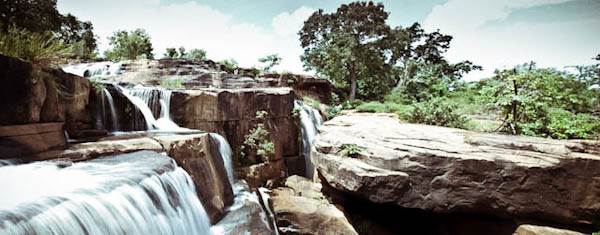


Riding back to Banfora
|
|
Currently Active Users Viewing This Thread: 1 (0 Registered Users and/or Members and 1 guests)
|
|
|
 Posting Rules
Posting Rules
|
You may not post new threads
You may not post replies
You may not post attachments
You may not edit your posts
HTML code is Off
|
|
|
|
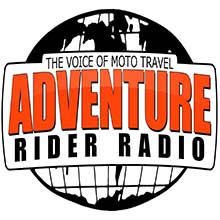
Check the RAW segments; Grant, your HU host is on every month!
Episodes below to listen to while you, err, pretend to do something or other...
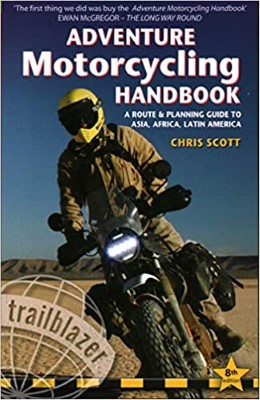
2020 Edition of Chris Scott's Adventure Motorcycling Handbook.
"Ultimate global guide for red-blooded bikers planning overseas exploration. Covers choice & preparation of best bike, shipping overseas, baggage design, riding techniques, travel health, visas, documentation, safety and useful addresses." Recommended. (Grant)

Ripcord Rescue Travel Insurance™ combines into a single integrated program the best evacuation and rescue with the premier travel insurance coverages designed for adventurers.
Led by special operations veterans, Stanford Medicine affiliated physicians, paramedics and other travel experts, Ripcord is perfect for adventure seekers, climbers, skiers, sports enthusiasts, hunters, international travelers, humanitarian efforts, expeditions and more.
Ripcord travel protection is now available for ALL nationalities, and travel is covered on motorcycles of all sizes!
What others say about HU...
"This site is the BIBLE for international bike travelers." Greg, Australia
"Thank you! The web site, The travels, The insight, The inspiration, Everything, just thanks." Colin, UK
"My friend and I are planning a trip from Singapore to England... We found (the HU) site invaluable as an aid to planning and have based a lot of our purchases (bikes, riding gear, etc.) on what we have learned from this site." Phil, Australia
"I for one always had an adventurous spirit, but you and Susan lit the fire for my trip and I'll be forever grateful for what you two do to inspire others to just do it." Brent, USA
"Your website is a mecca of valuable information and the (video) series is informative, entertaining, and inspiring!" Jennifer, Canada
"Your worldwide organisation and events are the Go To places to for all serious touring and aspiring touring bikers." Trevor, South Africa
"This is the answer to all my questions." Haydn, Australia
"Keep going the excellent work you are doing for Horizons Unlimited - I love it!" Thomas, Germany
Lots more comments here!
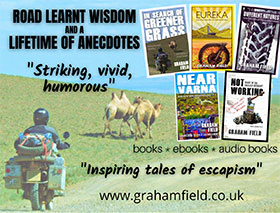
Diaries of a compulsive traveller
by Graham Field
Book, eBook, Audiobook
"A compelling, honest, inspiring and entertaining writing style with a built-in feel-good factor" Get them NOW from the authors' website and Amazon.com, Amazon.ca, Amazon.co.uk.
Back Road Map Books and Backroad GPS Maps for all of Canada - a must have!
New to Horizons Unlimited?
New to motorcycle travelling? New to the HU site? Confused? Too many options? It's really very simple - just 4 easy steps!
Horizons Unlimited was founded in 1997 by Grant and Susan Johnson following their journey around the world on a BMW R80G/S.
 Read more about Grant & Susan's story
Read more about Grant & Susan's story
Membership - help keep us going!
Horizons Unlimited is not a big multi-national company, just two people who love motorcycle travel and have grown what started as a hobby in 1997 into a full time job (usually 8-10 hours per day and 7 days a week) and a labour of love. To keep it going and a roof over our heads, we run events all over the world with the help of volunteers; we sell inspirational and informative DVDs; we have a few selected advertisers; and we make a small amount from memberships.
You don't have to be a Member to come to an HU meeting, access the website, or ask questions on the HUBB. What you get for your membership contribution is our sincere gratitude, good karma and knowing that you're helping to keep the motorcycle travel dream alive. Contributing Members and Gold Members do get additional features on the HUBB. Here's a list of all the Member benefits on the HUBB.
|
|
|







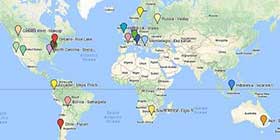











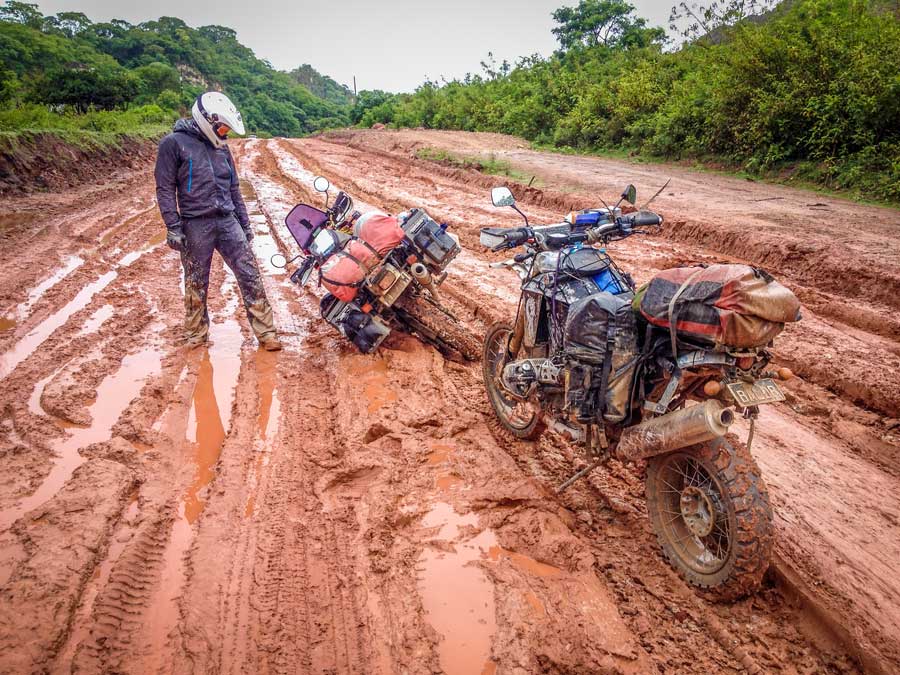
 16Likes
16Likes































































































































































































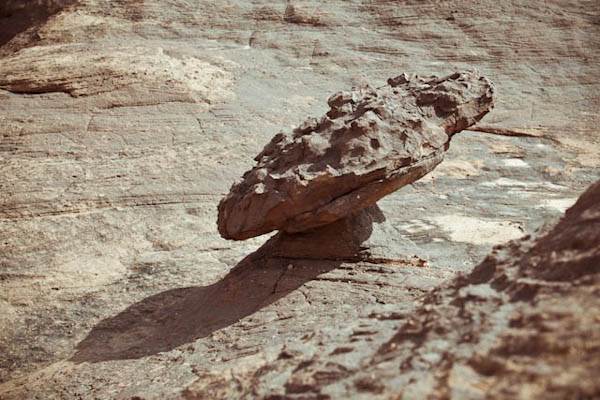


























 , coffee, yoghurt, omelets, rice and sandwiches.
, coffee, yoghurt, omelets, rice and sandwiches.


















 Linear Mode
Linear Mode









